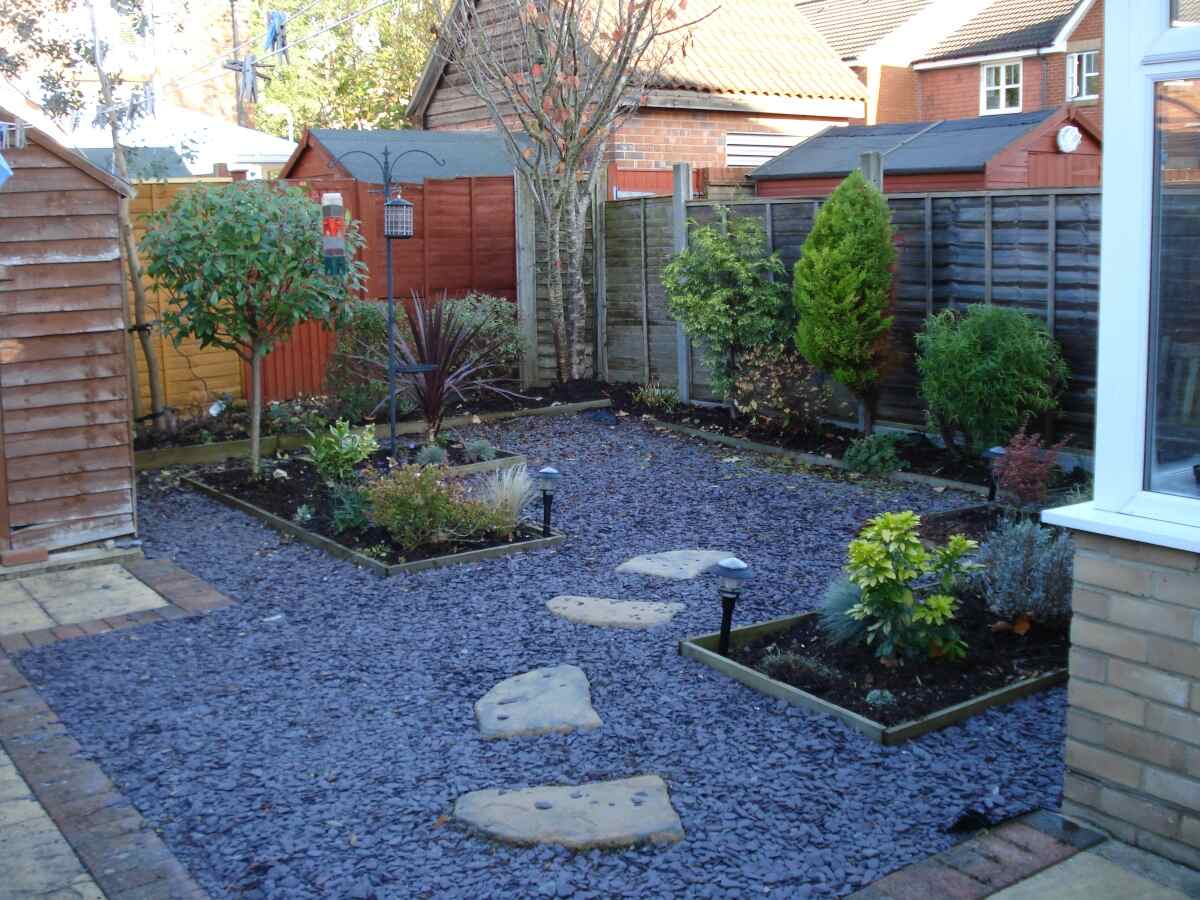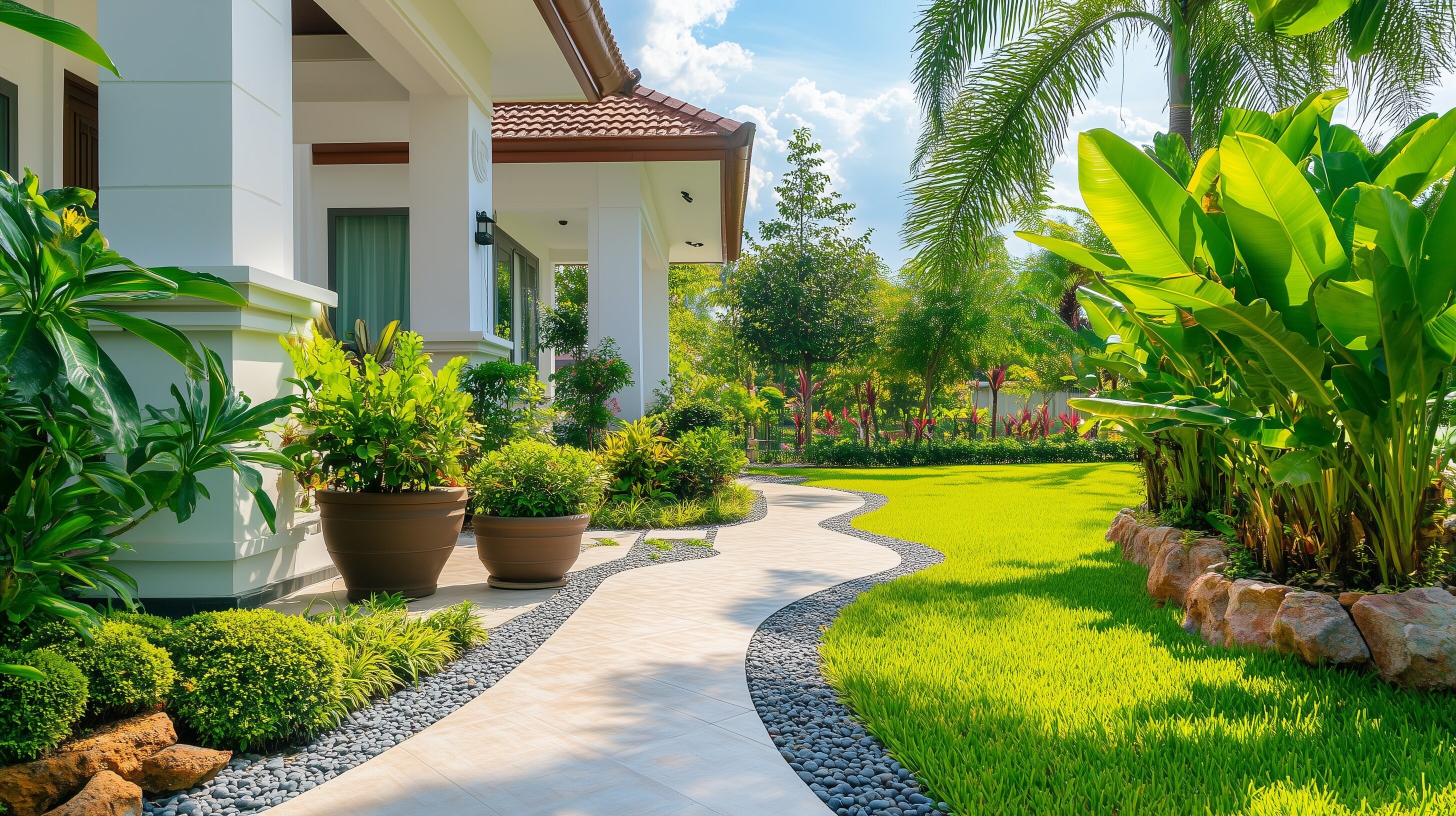The Complete Guide to Hiring an Outdoor Lighting Installer in Los Angeles
Checking Out Different Kinds Of Landscaping to Boost Your Outdoor Atmosphere
Landscape design plays a crucial role in defining exterior areas. Numerous styles, from typical yards to modern minimal designs, supply unique benefits for improving looks and feature. Integrating components like xeriscaping and indigenous plants can add to environmental equilibrium. Understanding the interplay of hardscape and softscape is important for developing welcoming environments. The choices offered can be frustrating, motivating one to review which style best aligns with their vision for an exterior haven.
Standard Yard Landscape Design

While lots of modern-day gardens welcome minimalism and indigenous growings, traditional yard landscaping continues to be a treasured method that stresses proportion, framework, and ornamental functions. This style typically incorporates official geometric formats, where flowerbeds, pathways, and bushes are set up with precision. Central focal factors, such as water fountains or sculptures, attract the eye and supply a sense of harmony.Traditional landscape design regularly consists of a range of plant types, showcasing seasonal flowers and evergreen components. Classic hedges, perennials, and annuals create dynamic shades and textures throughout the year. In addition, pergolas, arcs, and trellises include vertical passion and function as assistance for climbing up plants, improving the overall aesthetic.The use all-natural products, such as stone and timber, more enriches the traditional landscape, contributing to an ageless top quality. Eventually, this design welcomes leisure and satisfaction, making it a precious choice for those seeking a stunning outdoor atmosphere.
Modern Minimalist Landscape Design
Modern minimal landscaping highlights simplicity and performance, defined by clean lines and open spaces. Trick characteristics include a limited plant palette and thoughtful hardscape style that focuses on use and visual charm. Reliable plant option approaches even more improve the minimalist method, creating peaceful outdoor environments that encourage leisure and contemplation.
Key Attributes of Minimalism
A growing trend in landscape design is the welcome of minimalism, defined by simpleness and functionality. Minimal landscaping concentrates on tidy lines, open areas, and a restricted color palette, advertising a feeling of serenity. Components are thoroughly curated to avoid mess, permitting each part to stick out. The use of natural products, such as rock and timber, improves the organic feel while keeping an aesthetic balance. Additionally, minimal styles typically integrate geometric shapes, which can develop visual passion without overwhelming the detects. Water functions may be consisted of, functioning as prime focus that boost peacefulness. Generally, minimalism in landscaping stresses the appeal of restraint, enabling nature's inherent top qualities to shine through in a harmonious exterior atmosphere.
Plant Option Techniques
Efficient plant selection is crucial for accomplishing the preferred aesthetic in contemporary minimal landscaping. The focus ought to be on simpleness, using a minimal palette of plants that enhance each other and the surrounding atmosphere. Native plants are frequently excellent, as they require less upkeep and water, advertising sustainability. Selecting types with varying textures and heights can include visual rate of interest without frustrating the room. Grouping plants in clusters instead of spreading them enhances communication and enhances the minimal theme. Evergreen ranges can supply year-round framework, while seasonal blooms introduce refined shade adjustments. Ultimately, the goal is to create a serene exterior area that personifies tranquility and harmony with thoughtful plant options.
Hardscape Layout Principles
Vital aspects in hardscape style significantly add to the overall visual appeals and performance of minimalist landscape design. This layout technique highlights clean lines and understated products, developing a clean visual experience. Trick parts include pathways, outdoor patios, and maintaining walls, which not just specify spaces but additionally improve accessibility and usability. Making use of products such as concrete, stone, and wood prevails, reflecting an all-natural yet contemporary visual. Integrating geometric shapes and balanced designs better strengthens the minimalist ideology, enabling an unified blend with bordering plant. Furthermore, proper drain and disintegration control are crucial factors to consider, guaranteeing long life and sustainability. Inevitably, efficient hardscape design works as a structure that complements softscape elements while maintaining equilibrium and simplicity in exterior atmospheres.
Cottage-Style Landscaping
Cottage-style landscape design offers a fascinating approach to developing inviting outside rooms. By integrating charming plant combinations, this style cultivates a sense of heat and whimsy. The emphasis on comfortable, well-defined locations encourages relaxation and satisfaction of nature.
Charming Plant Combinations
Many house owners look for to develop an attractive outdoor room, attaining the beauty of cottage-style landscaping commonly hinges on thoughtful plant mixes. Dynamic flowers, lavish vegetation, and fragrant herbs can be artfully paired to evoke a feeling of whimsy and nostalgia. As an example, combining lavender, sissies, and foxgloves develops a vivid tapestry that attracts pollinators while offering a wonderful fragrance. Including decorative turfs like miscanthus can add texture and movement, enhancing the softer blossoms. Furthermore, mixing yearly and seasonal plants guarantees continuous shade throughout the periods. Making use of mountain climbers, such as clematis or honeysuckle, can enhance upright interest. Overall, these mixes not just improve the landscape however likewise foster a bewitching and welcoming atmosphere.

Relaxing Exterior Rooms
Creating comfortable exterior rooms requires a careful blend of comfort and appeal, enhancing the vivid plant combinations found in cottage-style landscaping - Retaining Wall Installation. These areas commonly include welcoming seating setups, such as weather-beaten wood benches or supported chairs bordered by lavish plant. Soft lights, like fairy lights or lanterns, includes heat, changing the area right into a serene hideaway. Incorporating elements such as trellises adorned with climbing roses or fragrant herbs enhances sensory experiences. Additionally, pathways made of rustic rocks welcome exploration and connection with nature. Ornamental touches like birdbaths or whimsical garden art add to a sense of fancifulness. Inevitably, the objective is to produce a charming atmosphere that motivates relaxation and satisfaction of the elegance surrounding these relaxing outdoor havens
Xeriscaping for Water Preservation
How can communities stabilize aesthetic landscape design with journalism demand for water preservation? Xeriscaping becomes a practical service, promoting lasting methods that minimize water use while improving outdoor appeal. This landscaping technique concentrates on using drought-resistant plants indigenous to the area, which require substantially much less water than traditional yards. By integrating mulch and effective irrigation systems, xeriscaping reduces dissipation and runoff, additional saving precious water resources.Communities can produce aesthetically enticing landscapes via careful planning, selecting a varied range of textures and colors that thrive in dry conditions. In addition, xeriscaping encourages using ornamental rocks and attractive gravel, providing functional and appealing options to yard lawns. As neighborhoods welcome this green technique, they not just decrease their water usage but likewise advertise biodiversity and resilience in their regional ecosystems. Eventually, xeriscaping functions as a presentation of the harmony between visual allure and environmental obligation.
Hardscape Layout Components
Hardscape design aspects play an important function in boosting outside areas by giving structure and performance. These non-plant attributes, such as patios, decks, sidewalks, and walls, develop aesthetic interest while serving useful functions. Using products like rock, concrete, and block, hardscaping adds to the general aesthetic charm and durability of a landscape.Incorporating hardscape elements can specify areas within a yard, directing movement and motivating social interaction. A well-placed path can attach different sections of the yard, while preserving wall surfaces can manage altitude adjustments and stop erosion.Furthermore, hardscape style can improve access and safety, offering secure surfaces for strolling or relaxing. Reliable assimilation of hardscape elements complements soft landscape design, making sure a balanced outdoor setting. Inevitably, thoughtful hardscape design enhances not only the beauty of outdoor rooms however also their functionality, making them much more inviting and practical for site visitors and property owners alike.
Outdoor Living Areas
While outdoor home provide a smooth blend of convenience and nature, they function as essential expansions of a home, enhancing way of life and leisure. These areas can consist of patios, decks, or outside kitchens, created to promote relaxation and home entertainment. Retaining Wall Installation. By including functional furniture and fashionable decoration, home owners create welcoming environments for celebrations or quiet evenings.The combination of shade frameworks, such as awnings or pergolas, shields versus the components while maintaining an open feel. Fire pits and outside heating units extend use right into cooler months, giving warmth and atmosphere. Furthermore, including lights features enhances the area's functionality after sunset, developing an enchanting night atmosphere.Landscaping components, such as pathways and borders, better define these areas, assisting motion and adding visual charm. Inevitably, outside home change yards right into flexible hideaways, advertising a lifestyle that welcomes both nature and convenience
Indigenous Plant Landscape Design
Indigenous plant landscape design highlights the use of aboriginal vegetation to produce harmonious and sustainable exterior atmospheres. This technique not just improves biodiversity however likewise saves water and minimizes the requirement for chemical fertilizers and chemicals. By selecting plants that are native to a specific area, property owners can ensure that their landscapes are well-adapted to local dirt and environment conditions, leading to lower upkeep requirements.Additionally, indigenous plants supply essential habitats for neighborhood wild animals, including birds, butterflies, and , promoting eco-friendly health and wellness. Landscape develops that incorporate these plants typically feature naturalistic formats that simulate local ecological communities, promoting a local color and link to the environment.Furthermore, indigenous plant landscape design can contribute to dirt stability and erosion control, making it an environmentally liable option. In general, this practice not only beautifies outside spaces yet also sustains the regional ecological community, producing a sustainable equilibrium in between human task and nature.

Frequently Asked Concerns
Exactly How Can I Choose the Right Landscaping Style for My Home?
Choosing the right landscape design design for a home entails evaluating the residential or commercial property's architecture, climate, and personal choices. Outdoor Lighting Installer. Looking into numerous Landscape Lighting Installer designs and seeking advice from experts can offer guidance to create an unified exterior area customized to specific needs
What Is the Average Price of Expert Landscaping Services?
The ordinary expense of professional landscape design solutions commonly varies from $1,000 to $5,000, depending upon job complexity, area, and dimension. Home owners ought to consider acquiring numerous quotes to ensure they receive fair rates and quality service.
Exactly how Frequently Should I Keep My Landscaped Backyard?
The frequency of maintaining a designed yard typically relies on the functions and plants existing. Typically, routine upkeep every few weeks is suggested, with seasonal tasks raising in frequency throughout peak growing periods for optimal health and appearances.
Are There Landscaping Choices for Small Urban Spaces?

Various landscaping alternatives exist for small metropolitan rooms, consisting of vertical yards, container plants, and rooftop yards. Including these components can maximize limited areas while supplying plant, enhancing looks, and boosting air top quality in urban settings.
What Plants Are Best for Attracting Local Wildlife?
The ideal plants for drawing in regional wildlife include native flowering types, berry-producing shrubs, and diverse lawns. These plants supply important food and habitat, fostering a flourishing ecological community that supports different birds, insects, and small creatures. Many homeowners look for to develop an attractive exterior area, accomplishing the charm of cottage-style landscaping frequently hinges on thoughtful plant combinations. Developing comfy outdoor rooms needs a cautious blend of convenience and beauty, enhancing the vivid plant mixes located in cottage-style landscape design. Indigenous plant landscaping stresses the usage of native plants to create lasting and unified exterior atmospheres. Landscape develops that incorporate these plants often include naturalistic designs that mimic neighborhood ecosystems, fostering a feeling of place and connection to the environment.Furthermore, indigenous plant landscaping can add to soil security and erosion control, making it an environmentally liable option. Various landscape design options exist for little urban rooms, including upright gardens, container plants, and rooftop gardens.